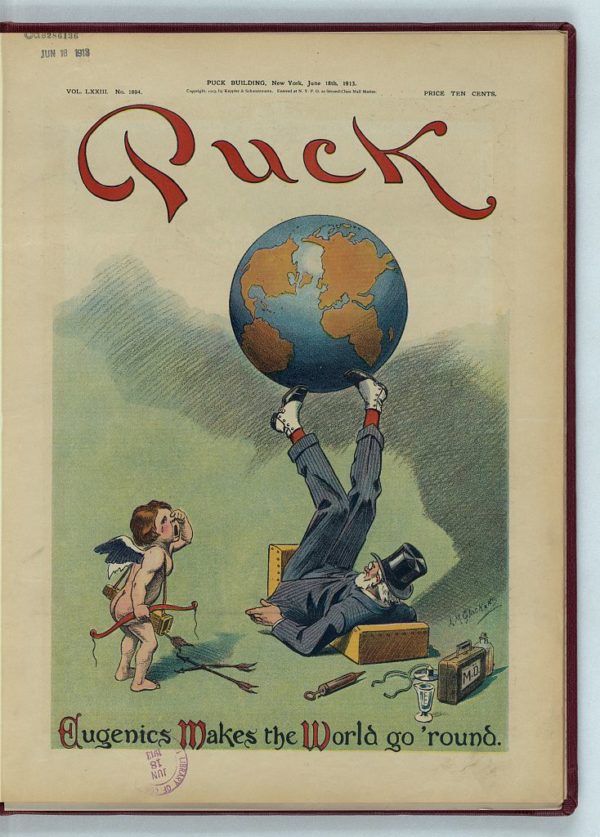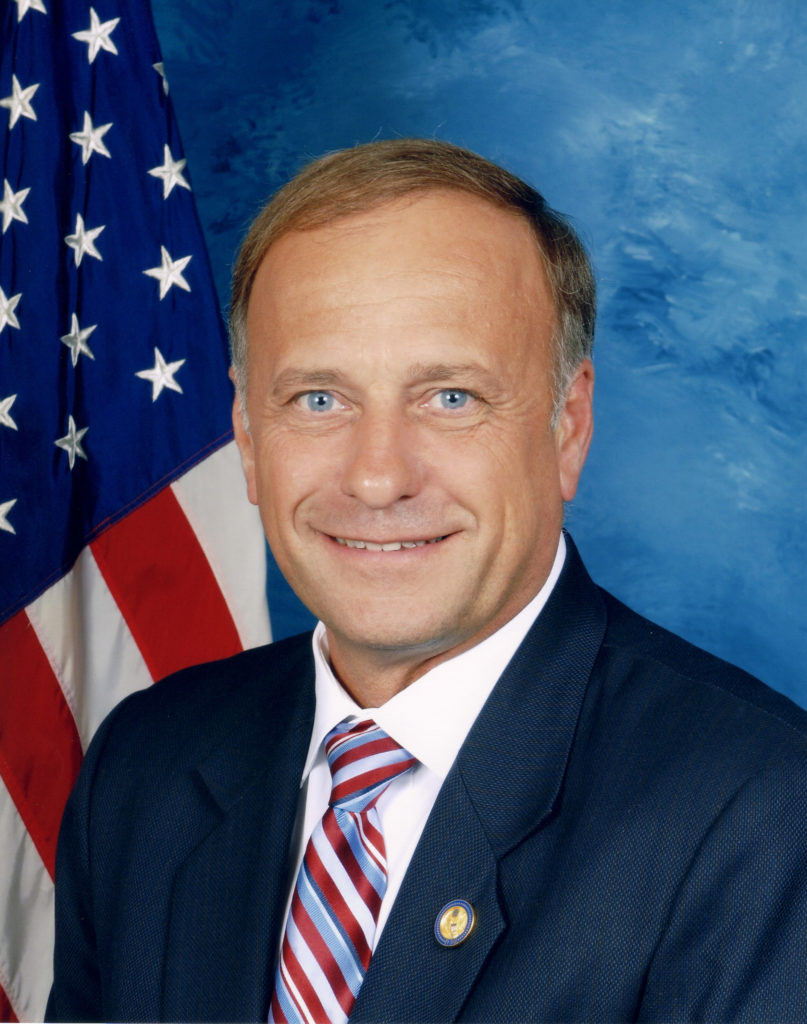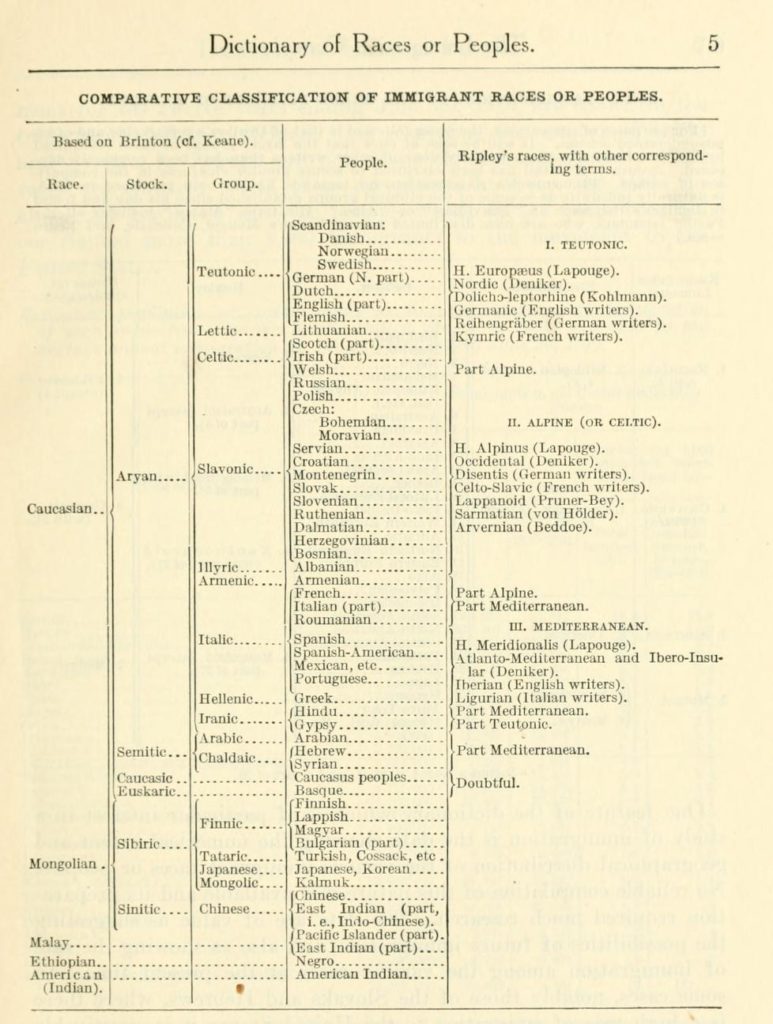Eugenics in the Trump Era

*To understand eugenics is to understand some of the motivation in the Trump White House. It cloaks raw bigotry in scientific terms and fills public discussions with dog-whistle racism. Please, don’t just click “like” and feel like you’ve done something. Read the article. VL
By Aaron E. Sanchez, Commentary & Cuentos (8.5 minute read) ![]()
On Friday April 14, 2017, Iowa representative Steve King was a guest on Iowa Press, an Iowa public television political show. The interviewer, Kay Henderson, pressed King on criticisms that he was a racist. In response, King defended earlier statements he made with a lengthy discussion on declining fertility rates in the Netherlands and the United States. He clarified that Western nations and the U.S. were no longer meeting their replacement levels (according to him 2.15 children per mother). This was to their detriment. “If you believe in Western Civilization and you believe in the American dream and the American civilization, then we ought to care enough to reproduce ourselves,” he explained.
[pullquote]Eugenics, or scientific racism, was a pseudoscience developed in the late 19th and early 20th centuries that used scientific language to explain that white supremacy and racial superiority as a law of nature, similar to gravity or physics.[/pullquote]
Henderson did not press King on his notion that civilization—a compendium of institutions, social customs, laws, economic systems, and cultural productions—could be passed on only through sexual reproduction and birth. King was asserting that civilization was genetically inherited, not learned or shared. That is, King believes that white American babies are born with a biologically determined knowledge of the English language and capitalism.
This was not King’s first foray into discredited eugenics. His explanation on Iowa Press was in defense of a tweet he wrote a few weeks before. In support of Geerts Wilders, a far-right anti-immigrant candidate in the Netherlands, King tweeted: “Wilders understands that culture and demographics are our destiny. We can’t restore our civilization with somebody else’s babies.”
This was not his first controversial statement of the year. Just this summer, at the Republican National Convention, King asked his fellow panelists “I’d ask you to go back through history and figure out, where are these contributions that have been made by these other categories of people that you’re talking about. Where did any other subgroup of people contribute more to civilization?” It is important to mention, that King, a representative of a state that fought in support of the Union, keeps a confederate flag on his desk.
King is not the only notable Trump supporter to issue eugenicist statements.
They have become increasingly popular since the summer of 2015, when Trump announced his candidacy.
The linkage between eugenics and conservatism began on the radical fringes of conservative ideas but has now made its way into the mainstream, and even into the White House. Pat Buchanan was most closely associated with these views in the early 2000s. Books like The Death of the West: How Dying Populations and Immigrant Invasions Imperil our Country and Civilization (2002), State of Emergency: the Third World Invasion and Conquest of America (2007), Suicide of a Superpower (2012) warned white Americans of the nonwhite invasion. Buchanan, however, remained a fringe figure.
In 2006, then-Alabama Senator Jeff Sessions, who had been denied a federal judgeship during the Reagan administration for accusations of racism (which notably elicited a letter from Coretta Scott King) showed his eugenicist ideas. He remarked in a floor speech “Fundamentally, almost no one coming from the Dominican Republic to the United States is coming here because they have a provable skill that would benefit us and that would indicate their likely success in our society.”
The conservative agitator Ann Coulter adopted eugenics in her 2016 book, Adios America: The Left’s Plan to turn our Country into a Third World Hellhole. In advance of her new book, she went on the TV network Fusion, where she told Jorge Ramos that Mexicans were biologically predisposed to criminality. According to her, Mexicans had an inferior culture that was at odds with American culture. Then in June of 2015, in a now historic address, Donald Trump announced his presidency on an anti-Mexican platform. He described them, and virtually all Latinos, as criminals and rapists.
Attorney General, Jeff Sessions has continued to articulate the eugenicism of the Trump administration. In a speech on the border in Nogales, Arizona, Sessions used the border as a physical and figurative dividing line not just between two nations but between two categories of people. The U.S. side was composed of “ranchers who work the land to make an honest living, and law-abiding citizens [who] seek to provide for their families.” On the Mexican side, there was nothing but “the danger posed by criminal aliens, gang members and cartel henchmen.” For Sessions, there along the border was the physical division between civilization and savagery in the 21st century.
Sadly, the words and the metaphors of Trump’s racism are not new. They have a long history in the U.S. Eugenics, or scientific racism, was a pseudoscience developed in the late 19th and early 20th centuries that used scientific language to explain that white supremacy and racial superiority as a law of nature, similar to gravity or physics. It was British scientist Francis Galton who coined the term in 1883, but better defined the term in 1909 as “the science which deals with all the influences that improve the inborn qualities of a race; also with those that develop them to the utmost advantage.”
Eugenicists believed that every facet of human life—mental capacity, moral character, personal hygiene, fitness for self-government—originated in a persons’ racial stock, or blood. These “racial elements” were passed on through reproduction or breeding. Races, then, were unique genetic formulas that varied biologically and could and should be ranked categorically. They could mix, but with disastrous results. This belief led Charles Davenport, director of the Study of Evolution at Cold Spring Harbor, Long Island, to write in 1904: “the idea of a ‘melting-pot’ belongs to a pre-Mendelian age. Now we recognize that characters are inherited as units and do not readily break up.” In other words, inferior stock, meaning non-white races, could only degrade superior stock, diluting and destroying all the enhanced characteristics of the superior group.
Eugenics and their conceptualization of race influenced many other academic fields, including history, anthropology, political science, and politics. Social scientists took the task of redefining civilization in the eugenicist age. Civilization was the culminating stage of human development, opposite of savagery and barbarism. Civilization meant democratic government, capitalist economies, independent nation-states, technological advancements, and urban societies. But just as in nature where some animals were more evolved than others, eugenicist social scientists believed some races were more evolved than others. They concerned themselves with sketching the social continuum of human evolution, meaning aspects of societal and political development. In the context of an age of imperialism that required justification, eugenicists’ categorization and study found that inferior races had not reached the sophisticated level of civilization of “Western races”or “Western Civilizaton” and were not capable of doing so. This led Daniel Ullman to write in the North American review in 1879: “We speak of self-government as if it was…a grand triumph of political sagacity. We all admit, that particular races, the Asiatics for instance, are not yet fit for it. We interpret their incapacity by assuming that they are not sufficiently advanced on the road to perfection.”
In many cases it was, as British author Rudyard Kipling explained in 1899, “the white man’s burden” to take responsibility for the rest of the world. White Americans, British, Germans, and Frenchman all had the obligation to control the world for the betterment of humanity.
The problem with eugenicist conceptualizations of “civilization” is that they were rooted in white supremacy. In other words, most eugenicists began with the presupposition of inherent white superiority. The concept of civilization was just an academic exercise in confirmation bias. They worked to find evidence to support their beliefs. This is why, at the height of eugenics, fields like phrenology, IQ studies, and other disciplines of anthropometry proliferated. It gave them numeric proof and statistical deviations in the measurement of racial inferiority and superiority.
Eugenics played a pivotal role in the early 20th century. Eugenics gave an authoritative explanation of why it was necessary for the U.S. to continue as a white nation—all of human development depended upon it. Eugenics didn’t convince the nation it was white; it only assured the nation it had a dire responsibility to continue to be a white nation. Eugenics built upon a long history of white supremacy, but also provided intellectual authority to it because of its scientific language. Eugenics gave support to changes in law and immigration policies to keep the races separate and certain races from mixing. A slew of anti-miscegenation laws appeared across the nation at the beginning of the 20th century. Forced sterilization of non-white women was common into the late 20th century, to keep them from breeding and birthing inferior babies. The 1924 Johnson-Reed Act built upon decades of nativism and eugenics to all but end non-white immigration to the U.S. for most of the twentieth century. These policies were not overturned until the 1960s with the passing of the Immigration Act of 1965 and Loving v. Virginia in 1967. Forced sterilizations continued across the country from California to the Carolinas until the 1970s.
There is no coincidence in the reemergence of eugenics in Trump’s America and his administration. Eugenics, or “scientific racism,” as it was called, was a pseudoscience, a fake science. For an administration that believes in “fake news” and governs in “alternative facts,” while rejecting scientific expertise and consensus, it is no surprise that they have promoted a century old fake science. But now, they are making their false science into real policy. Trump campaigned on a promise to make America great again by making America white again. He would deport Latinos and Muslims. He would build a wall around the nation to protect it. He would keep immigrants out. Steve King, Steve Bannon, Steven Miller, Jeff Sessions all share a central belief that the character and content of the nation is made of a white racial stock, that only one group of people are genetically capable of creating and sustaining “civilization.” In an effort to stop the “American carnage” of the nation’s changing demographics, they are willing purify the nation’s blood by building walls and breaking bodies.
This article was originally published in Commentary & Cuentos.
Do you like stories that reflect authentic Latino life in the U.S.?
Be part of a positive change
![]() Commentary & Cuentos
Commentary & Cuentos




